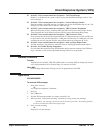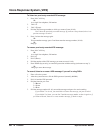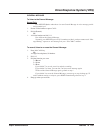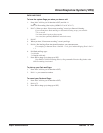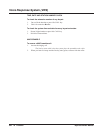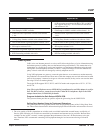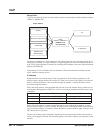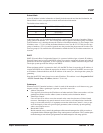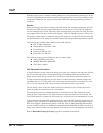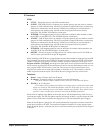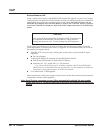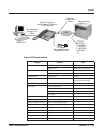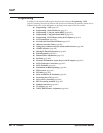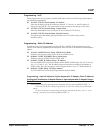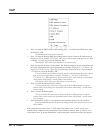
VoIP
Aspire Software Manual Features ◆ 645
Subnet Mask
As the IP Address includes information to identify both the network and the final destination, the
Subnet Mask is used to set apart the network and destination information.
The default subnet masks are:
In the above table, you’ll see that the Subnet Mask is made up of four groups of numbers. When a
group contains the number ‘255’, this is telling the router to ignore or mask that group of numbers
in the IP address as it is defining the network location of the final destination. So, for example, if the
IP Address were: 172.16.0.10 and the Subnet Mask used was Class B (255.255.0.0), the first two
groups of numbers (172.16) would be ignored once they reached the proper network location. The
next two groups (0.10) would be the final destination within the LAN to which the connection is to
be made.
DHCP
DHCP (Dynamic Host Configuration Protocol) is a protocol which assigns a dynamic IP Address.
Network control may be easier with DHCP as there is no need to assign and program individual IP
Addresses for the LAN equipment. To use a dynamic IP Address, a DHCP server must be provided.
The Aspire system provides the ability to use DHCP.
When equipment which is connected to the LAN (the DHCP client) is requesting an IP Address, it
searches the DHCP server. When the request for an address is recognized, the DHCP server assigns
an IP Address, Subnet definition, and the IP Address of the router, etc., based upon the system pro-
gramming.
Note that the NTCPU must always have a static IP address. This address is set in Program 10-12-01
: NTCPU Network Setup - IP Address (default: 172.16.0.10).
Gatekeeper
Whenever an H.323 terminal activates, a check is made of the network to see if there are any gate-
keepers available. When a gatekeeper is present, it provides users with:
● Address Translation
Users typically do not know the IP addresses of other terminals. When a user makes a call, the
gatekeeper translates an alias address (name or number) to the destination address.
● Admissions Control
Users will not all be able to access the network at the same time because of limited shared
resources. Gatekeepers may restrict network access based on call authorization, bandwidth
usage, or some other criteria. It is important to note that Admissions Control is a way to pre-
serve the integrity of the calls (provide QoS guarantees) that are already up and operating
when a user requests access.
● Bandwidth Control
Besides network access control, the gatekeeper offers network managers the ability to restrict or
assign bandwidth to different applications along certain protocol conventions. This is another place
network managers can enforce QoS guarantees and other enterprise-wide usage policies.
Class Default Subnet Mask
A 255.0.0.0
B 255.255.0.0
C 255.255.255.0



